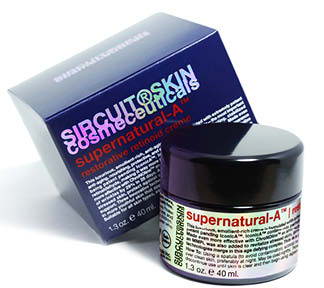
UNDERSTANDING VITAMIN A.
Vitamin A’s (a Retinoid) role in anti-aging creams is primarily to smooth the skin’s appearance and help to reduce the look of fine lines and wrinkles. It also has been proven to be beneficial for problem skin. In fact, it is one of the most exciting and well-researched ingredients in skincare today. With that said, there is still much confusion regarding the various forms and versions of Vitamin A, including why the percentages and strengths of this very important ingredient matter.
So, let’s try to clear it up.
The term (Retinoid) describes a group of Vitamin A derivatives that have been proven to help make skin smooth and soft, while also unclogging pores. They also help to stimulate collagen production, reducing fine lines, and encouraging cellular turnover to increase radiance. The first retinoid—tretinoin—was FDA approved, and released under the brand name Retin-A, almost 40 years ago as a prescription acne treatment. Soon after, Dermatologists quickly noticed that patients on Retin-A experienced not just clearer, but also softer, brighter, radiant skin.
Today there are three prescription-strength Retinoids: Tretinoin, Tazarotene, and Adapalene. Many dermatologists have found Tazarotene stronger (and potentially more irritating) than Tretinoin; Adapalene, is the gentlest to the skin but may be less effective. While prescription formulas have yielded the most impressive results, they also can be quite irritating to the skin.
One of the most popular over-the-counter versions of (Vitamin A) is called Retinol. In fact, Retinol is the “name” often used when describing all the different variations and forms of this (Vitamin A) ingredient and also why some confusion happens when it is referenced.
Ok, here’s what we know.
Very Important.
All forms of Retinoids (over the counter) must convert into Retinoic Acid in order for the body to absorb the ingredient, which in turn results in the benefits described above.
In a nutshell, for any Vitamin A derivative to be effective, it must first convert into Retinoic Acid.
How it works:
- Retinyl Palmitate (and the other ester forms mentioned above) will first need to covert to Retinol.
- Then the Retinol itself needs to be converted into Retinaldehyde (Retinal).
- Retinaldehyde, will now need to be converted into Retinoic Acid to be able to be effective on the skin. (whew… finally).
- Bottom line: Retinoic Acid is the only form of Retinoid that directly affects your skin, and is what produces the amazing benefits.

Percentages and effectiveness. Is more, better?
Using a higher concentration of Retinol helps to counteract degredation but can also come at a price. The higher concentration of Retinol helps to ensure that it might still be effective after it converts to Retinoic Acid but the drawback is the higher concentration can also cause increased irritation and over stimulation. High concentrations of Retinol can also be almost as irritating to the skin as prescription strength Retin-A.
The conclusion is that the percentage of the ingredient doesnt matter as much as the form of retinoid used. Retinol is far more effective (yielding better, end consumer results) if it is stabilized and is able to keep its activity.
So, to repeat myself, because it is an important point. what is ultimately more important than the percentage of the Retinol, is the effectiveness of the particular Retinoid used.
Finding a stable Retinol product that has a high enough concentration level to be effective, and without being too high to cause skin irritation can be difficult.
Thankfully, research in this area has yielded an amazing new breakthrough.
Now, for the first time, a brand new patent pending, stabilized Retinaldehyde (Retinal) called IconicA® which is one conversion step away from Retinoic Acid has been introduced. IconicA® offers more effectiveness than what is usually associated with stronger strength Retinols, while also dramatically reducing the opportunity for dryness and irritation. It is the one ingredient that has successfully utilized a naturally encapsulated and stabilized Retinaldehyde (Retinal), keeping it fresh and ready to be utilized by the skin.
IconicA® is simply a game changing ingredient.
It is the perfect skin solution for those looking for an effective Retinol product and proudly featured in two of SIRCUIT®s newest "Must Have" beauty treatment products. Supernatural-A (Encapsulated Retinaldehyde, (Retinal) 0.1%) and Infusion-A serum (Encapsulated Retinaldehyde (Retinal) 0.1%) are wowing critics and taking the country by storm. Finally, the skin solutions consumers have been waiting for.
I hope this helps to clear up some of the confusion regarding this amazing ingredient and highlights the incredible potential of IconicA®.



